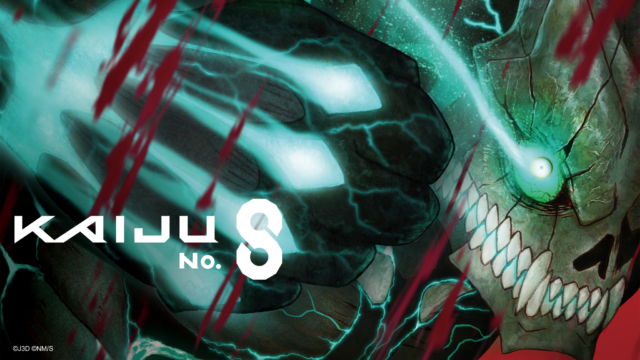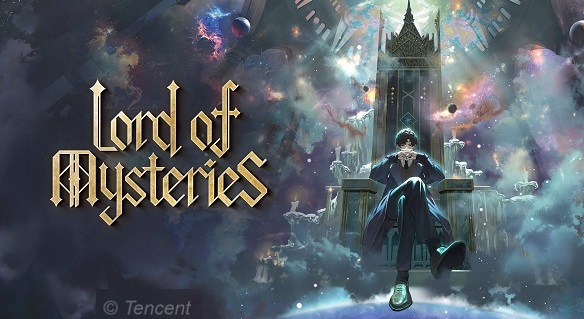English Dub Season Review: Synduality: Noir Season One
Overview (Spoilers Below):
In 2242, Kanata (Calvin Joyal) meets Noir (Erin Yvette), a Magus who lost her memories. Kanata wants to become a Drifter and partners up with Noir to learn how to become one.
Our Take:
Synduality: Noir is an anime adaptation of a mixed-media project created by the Bandai Namco Group. It is directed by Yusuke Yamamoto, with Takashi Aoshima writing the scripts based on Hajime Kamoshida’s story draft. It is produced by Bandai Namco Filmworks and animated by Eight Bit, known for animating shows like Tokyo Ravens, That Time I Got Reincarnated as a Slime, and Blue Lock. Kenichirō Katsura designed the characters, and Masato Nakayama composed the music. The opening theme songs are “Raytracer,” performed by Stereo Dive Foundation, and “Aire,” performed by Arcana Project. The ending theme songs are “Eureka,” performed by Arcana Project, and “Drifters,” performed by Stereo Dive Foundation.
Usually, I would come up with something attention-grabbing to introduce the topic of this latest mixed-media sci-fi franchise. But, considering the concept’s world-building, this is one of the rare occasions where I couldn’t come up with anything. However, it was still nice to review an original anime amid its multiple adaptations, especially one that’s part of a franchise consisting of various media. In this case, we have an anime that introduced viewers to a futuristic Earth where humanity was struck by “Tears of the New Moon”, a series of catastrophes caused by the deadly “blue rain”. This blue rain is highly lethal to humans but can also create monstrous versions of animals and plants known as “Enders”. As a result, the surviving humans take refuge in underground facilities, but that is just the beginning.
Synduality: Noir, consisting of 24 episodes, occurs twenty years after the events of the franchise’s video game, Echo of Ada. The collapse of the upper levels of the underground city, Amasia, has forced survivors to live in smaller towns called “Nests” and caused the leakage of humanity’s supply of materials and technology. This also gave rise to a group of mech-piloting freelancers known as “Drifters,” who collect a rare resource called AO Crystals to earn a living. The show’s protagonist, a collector named Kanata, dreams of becoming a Drifter while under Tokio’s (Aaron Dismuke) care in Rock Town. Kanata eventually fulfills that fantasy when he partners with Noir, an amnesic AI android, or Magus. As the duo works to uncover Noir’s past, they encounter numerous challenges that’ll teach Kanata about becoming a full-fledged Drifter.
Regarding its world-building, Synduality: Noir shared no expense in introducing viewers to this part of history, including the “Nest” communities, the “blue rain”, and the functionalities of a Magus and their relationships with the Drifters. However, in some cases, it does require them to do further research on the show’s universe to fully understand specific elements and characters, especially the events that occurred before the show’s events. One example is Alba Kuze (Johnny Yong Bosch) and his Magus Ada (Madeline Dorroh), who appeared in the show starting with the ninth episode, “Legendary Hero”, before appearing in Echo of Ada a year after the show’s conclusion. Thankfully, it’s not in a way that grinds their interest to a halt. With it being the first introduction to the Synduality universe, the anime faced an uphill battle to get anime fanatics invested in the following types of media chronicling the mech-infused future. Based on its current status, the franchise has accomplished this mission fairly well. It’s vague enough to get people interested in learning more about the universe, but it also makes parts easy to digest without being too complex.
But what about the overall story itself? Well, it’s not something we haven’t seen in other anime before, conveying itself as a low-level Mobile Suit Gundam. However, that doesn’t make it less entertaining, as it offered enough moments in its presentation and characters to synchronize audiences’ interests in mech anime and sci-fi action. It features the usual underdog story involving a timid yet kindhearted Kanata’s quest to fulfill his dream of becoming a Drifter and finding the unknown city, Histoire. Amid the quest, he discovers plenty of challenges that’ll test his loyalty and determination to get stronger, including the return of the parasitic Silver Storm in the first half’s climax. The other is the appearance of Mystere (Yvette), who takes over Noir occasionally in the second half, changing the dynamic between the Drifter/Magus duo for the remaining season due to Mystere’s intimidating persona. In a way, Kanata functions similarly to Deku from My Hero Academia, in which they both fight to achieve their fantasies, exceed people’s low expectations, and protect the people they love. Although Deku’s growth presents a more compelling sense of sentimentality and heart, Kanata’s journey offers plenty of amusement that enhances the show’s entertainment value. This is due to Calvin Joyal’s ability to instill likability into Kanata’s personality.
Another reason was the charm it injected into the characters’ seemingly straightforward personalities and the show’s plots. In addition to being an action-packed mech-vs-monster anime, Synduality: Noir provided several slice-of-life comedy bits to emphasize the characters’ chemistry outside of fighting their adversaries. Some episodes may seem like pointless fillers to needlessly double the season’s usual length, including the eighth episode, “Pure Dream”, which has the characters spending a relaxing day at Satellite Aqua. Fortunately, they’re fun enough to warrant their existence while taking advantage of their plots to explore their character arcs further. Additionally, it surprisingly provided a proper use of comedic timing to balance the show’s action, resulting in more laughs than I anticipated.
One example is Ellie (Merit Leighton), Kanata’s childhood friend. In addition to her childhood history with Kanata, Ellie secretly has a crush on him but hides those feelings with her stubbornness and jealousy over the female Magus fondling him, mainly in “Pure Dream”. Was this arc familiar by design? Yes, but it’s humorous enough to bypass Ellie’s formulaic traits. Another example I appreciated was Tokio, a Drifter who acted as Kanata’s caretaker. Tokio was initially seen as a hot-headed and ignorant Drifter. However, the later episodes depicted him as also tenderhearted, regarding him protecting Kanata as a “brother figure”, along with his history with the mysterious man with the black mask named Kurokamen (Ryan Colt Levy) and the season’s main antagonist, Weisheit Blaurecht (Michael Sinterniklaas). This arc is persuasive enough for me to tolerate Tokio’s personality and character arc. This is another example of an anime utilizing its characters’ usual traits to inject likability and charisma into its plot to maintain interest in its narrative and themes. This was also the case for the second half, which sees Kanata allying with Mystere and Ciel (Frankie Kevich) to find Histoire, and its representation of friendship and value, with the latter centering on Noir’s struggle with her existence as Kanata’s partner.
There’s certainly plenty to admire in its presentation, especially when it’s animated by Eight Bit. I hadn’t watched any of the company’s works before Synduality: Noir, but I had a feeling that might change after watching it. This is another anime that uses both 2D animation and CGI elements to convey its vibrant presentation, which usually spells disaster regarding the latter’s uncanny valley. Thankfully, that wasn’t the case in Synduality, as it emphasized the animators’ efforts in making the blend more tolerable than anticipated. The 2D animation provided a dynamic and visually engaging approach, effectively conveying its entertaining action sequences and sophisticated character designs. As for the CGI, it’s safe to say that this is one occasion where I didn’t mind them integrating with traditional 2D aesthetics. The CGI, mainly for the Drifters’ mechs, functioned at a smooth and consistent rate that didn’t appear too clunky in the movements. This integration enhanced the overall thrill and immersion of the action rather than detracting from it.
It’s always crucial for a mixed-media project to make a strong first impression when introducing its world-building, whether with anime or manga. Fortunately, this is the case for Synduality: Noir, which has enough functionalities in its system to deliver an entertainingly suitable launching point for Bandai’s sci-fi mech franchise. Its 24-episode season can be quite concerning regarding its minor slice-of-life elements stuffed between the mech action and its pacing. Thankfully, it didn’t end up facing the same fate as The Fable, which tuned me out of its subpar plot halfway through the season. In comparison, Synduality kept me intrigued through its world-building, likable characters, solid animation, and engaging narrative elements despite a few familiar traits lurking about. While far from a revolutionary take on the mech genre, it’s a solid addition to the catalog that’s useful in satisfying fans of bot-fighting mayhem.























"There are also other characters that come and go (also owned by the Warner Bros. Discovery conglomerate media company)."
Huh. Is that just referring to other characters from the show itself, or is this implying that the new season is going to have cameos from other WBD IPs